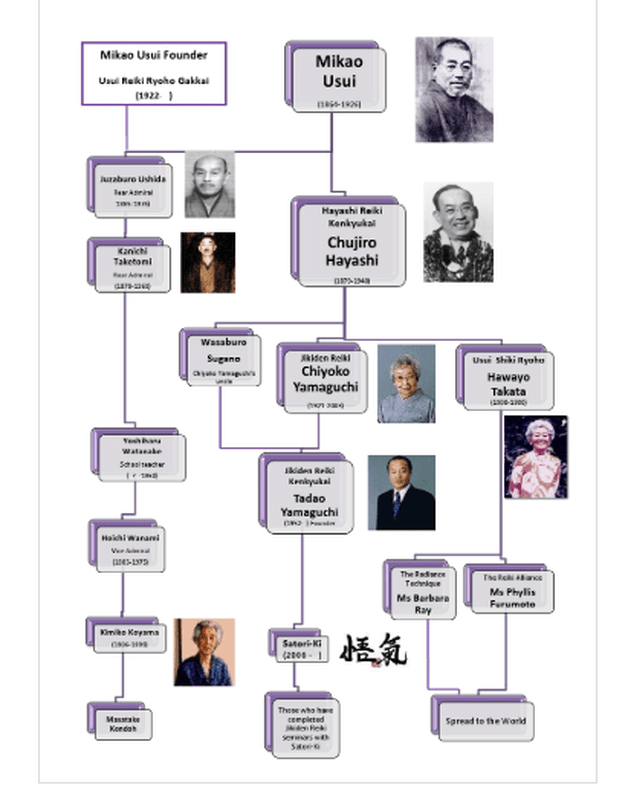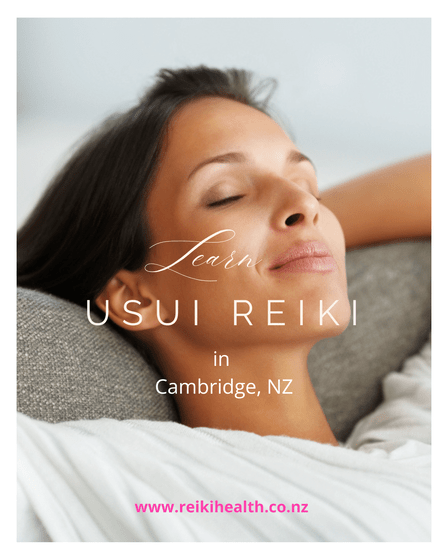Reiki inspires millions of people around the world
Reiki is more than just a healing practice, it’s a way of remembering the peace, clarity, and vitality that already live within us.
Since its creation in early 20th-century Japan by Mikao Usui, Reiki has gently spread its wings across the world. As it journeyed from East (Japan) to West (the rest of the world), it blossomed into two distinct styles:
Eastern Reiki, which stays close to its spiritual roots, and Western Reiki, which adapted to support a global, often clinical audience.
In Essence
'Both are beautiful. Both work. And both remind us that healing is possible, on every level'.
Birthed in two different cultures, Western and Eastern Reiki are simply two different ways of applying the same beautiful Reiki
Western Reiki arose as the Reiki lineage that descended from Takata Sensei. Takata Sensei taught all her twenty-two Reiki teachers orally, creating confusion amongst some of her Teachers as they went forward in their own Reiki careers after her death. Less emphasis was given to the spiritual aspects of Reiki, such as the Gokkai and Gassho.
But with Eastern Reiki and its original teachings and practices, becoming more available in the West, Western Reiki teachers can add more depth and knowledge to their Classes and practice.
Two Lineages, One Source
Eastern Reiki, also known as Usui Reiki Ryōhō, is practiced much like it was during Mikao Usui’s time. Rooted in Japanese tradition, it’s passed down through lineages like Jikiden Reiki, Gendai Reiki, and Komyo Reiki. These schools often focus on meditation, energy awareness, and spiritual development.
Western Reiki made its way to the world through Hawayo Takata, a Japanese-American woman who brought Reiki to Hawaii in the 1930s. She simplified and systematised the practice so it could be more easily shared, especially in hospitals, hospices, healing centres, and homes across the globe.
In Essence
'Both forms of Reiki are connected by the same universal energy. It’s the way we work with it that varies'
The Practice: Structured or Intuitive?
In Eastern Reiki, practitioners lean into intuition and energy sensitivity. Techniques like:
Reiji-hō (letting energy guide your hands),
Byōsen scanning (sensing imbalances),
And Hatsurei-hō (a beautiful daily ritual of spiritual cleansing)
...are all about building inner clarity and presence.
Western Reiki is often more structured and hands-on. You'll find clearly defined hand positions, session formats, and a strong focus on client care. It’s perfect for beginners or anyone drawn to energy work with a clear roadmap.
In Essence
'Eastern Reiki tends to follow feeling, Western Reiki tends more to follow form, but both originate from the same universal life force energy and both are deeply healing'
Symbols and Mantras: Tools for Transformation
In Eastern Reiki, symbols are sometimes introduced later or with more subtlety. They’re seen as aids in spiritual focus and meditation, not always needed during every session. The energy comes from your connection, not the tool.
Western Reiki uses symbols early in training (usually at Level 2 or Okuden), like keys to unlock different energies, emotional healing, distance healing, empowerment. They’re repeated with intention, becoming powerful tools during a session.
In Essence
'The symbol is not the power. You are. The symbol is just a doorway to help you remember'.
Attunement vs Reiju: Awakening Energy
Eastern Reiki offers Reiju, meaning “spiritual blessing.” It’s usually simpler, more subtle, and repeated regularly. The idea? Your connection to Reiki deepens every time you receive a Reiju. Your Reiki is not just one moment, it’s a lifelong relationship.
In Western Reiki, students receive Attunements, a ceremonial initiation that helps activate the flow of Reiki. Both are often powerful, emotional moments for new practitioners.
In Essence
'Whether it's an attunement or a blessing, it’s really a experiential reminder: you’re already connected'
A Healing Modality or a Spiritual Path?
Western Reiki often shines in therapeutic spaces, used by nurses, healers, massage therapists, and wellness coaches and homes for personal and family treatments. It’s practical, adaptable, and especially helpful for stress, anxiety, and physical healing.
Eastern Reiki tends to lean more into the spiritual roots of the practice. The Five Reiki Precepts are treated not just as teaching points, but as a daily path toward a more joyful, grounded, and compassionate life.
Called the Gokai, they are -
‘Just for today… do not anger.
Do not worry.
Be grateful.
Work diligently (be present).
Be kind to all living beings’.
In Essence
'Healing doesn’t always mean fixing. Sometimes it means remembering how whole you already are'.
Reiki Around the World: Healing Without Borders
Reiki is now practised in hospitals, hospices, clinics, yoga studios, and homes on every continent. It’s recognised as a powerful complementary therapy, especially for:
Pain relief
Stress reduction
Sleep improvement
Emotional balance
Recovery support
Places like Cleveland Clinic and Memorial Sloan Kettering have incorporated Reiki into patient care, acknowledging its role in enhancing the quality of life and calming the nervous system.
And for everyday people?
'Reiki is a sanctuary. A way to feel safe, seen, and soothed, without needing to say a word'.
Which Path Is Right for You?
Truthfully? There's no wrong path.
If you’re drawn to a structured, client-based approach with tools and protocols, Western Reiki may be your doorway.
If you long for a more internal, spiritual path, focused on meditation and energetic presence, Eastern Reiki may be the way.
In Essence
'Many modern practitioners walk a blended path, honouring both tradition and innovation. Reiki, after all, is living energy. It moves. It grows. It evolves with you'
The Heart of Reiki: A Return to Wholeness
In the end, Reiki is not about labels or styles. It’s about remembering your connection to something larger, wiser, and more loving than your worries.
Whether you're using structured hand positions or simply placing your palms over your heart in quiet trust…
Whether you're chanting ancient mantras or just breathing slowly in silence…
You’re doing Reiki.
You’re holding space for healing.
You’re becoming the calm in the storm.
You’re reconnecting to the part of you that’s always been whole.
In Essence
'So wherever you are on your Reiki journey, beginner, master, or curious soul, know this:
You are the light and Reiki is the pathway to remembering that'.










